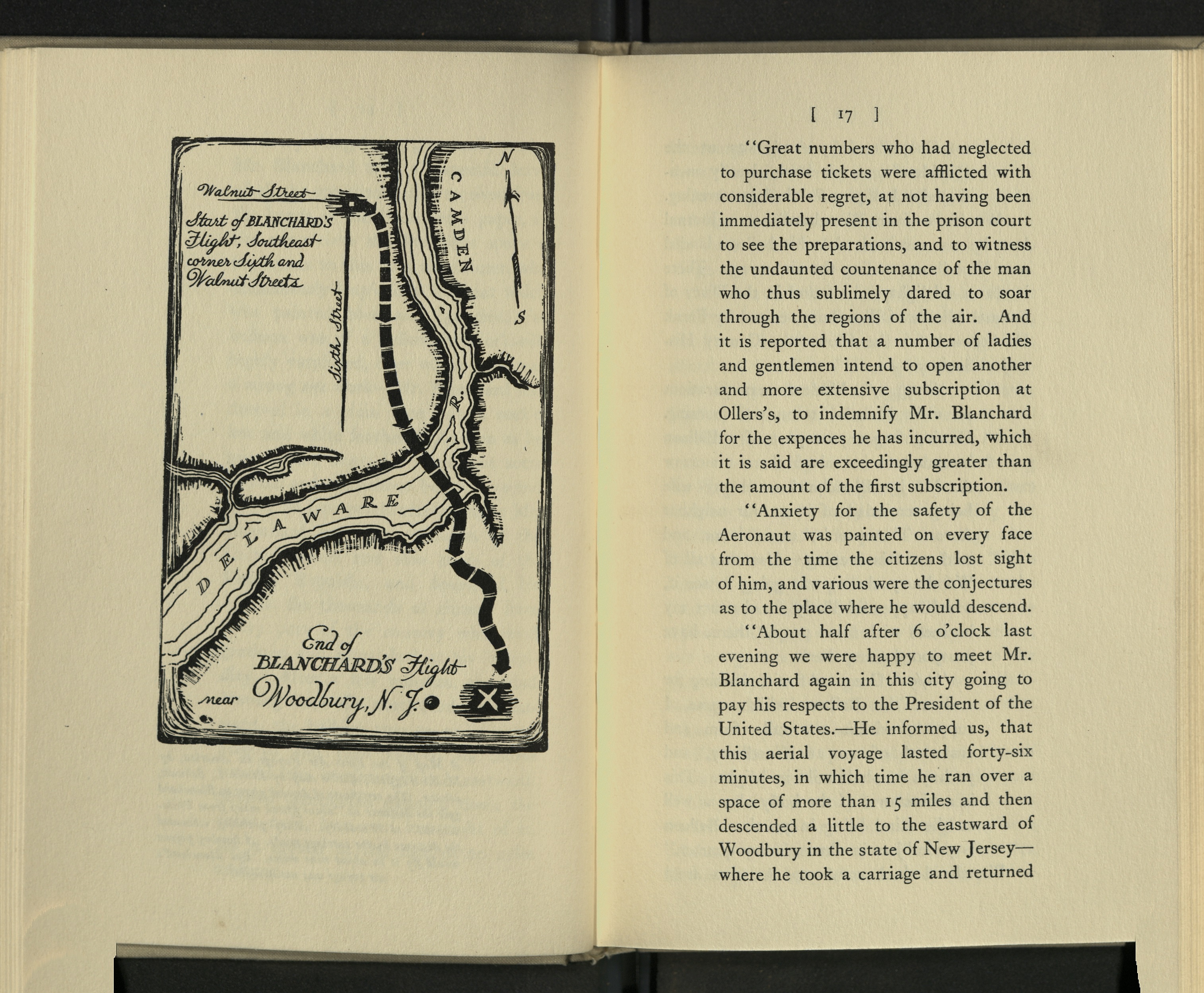Aiming for the Sky: Early Aeronautics and the American Philosophical Society
In anticipation of Benjamin Franklin's birthday on January 17, APS Fellow Madalina Veres has written the following post about one of Franklin's chief scientific interests during his time in Europe: hot air balloons. Enjoy!
On December 16, 1784, the son of Benjamin Franklin, William Franklin (1731-1813) sent the first airmail letter to his own son, William Temple Franklin (1760-1823). Aware of the historical significance of the moment, William Franklin wrote: “I dare say you will like to be the one of the first who gets a Letter across the British Channel by this kind of aerial Conveyance.” Crossing the English Channel in Jean-Pierre Blanchard’s balloon, on January 7, 1785, this document is part of the American Philosophical Society’s Library’s collections.
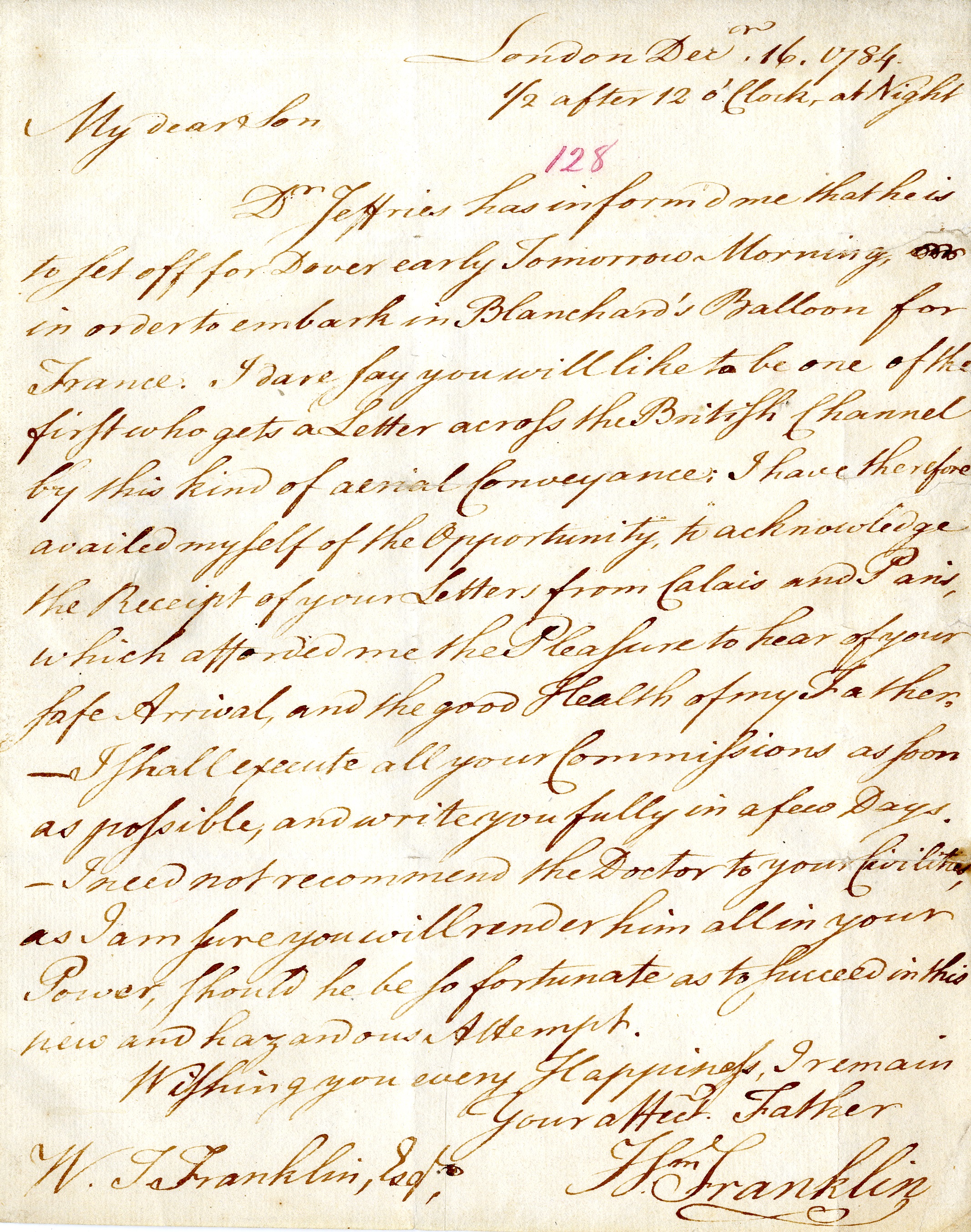
This letter is not merely an intriguing curiosity but reflects the Society’s scientific interest in aeronautics and support for the first air voyage in America. Already on December 10, 1783, the Marquis of Lafayette (APS 1781) submitted to the Society a “narrative of the experiments made in France with air balloons,” most likely a description of the November 21, 1783 ascension of physicist Jean François Pilatre de Rozier and François Laurent d’Arlandes.
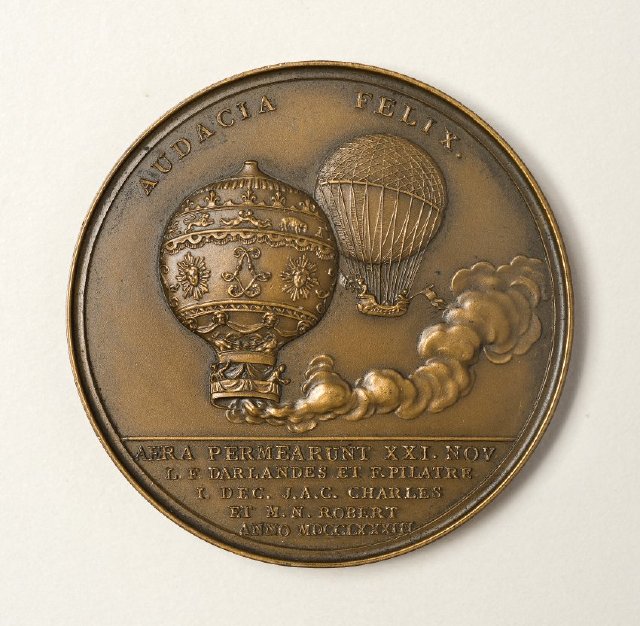
In France at the time, Benjamin Franklin also witnessed this impressive feat. We know from Franklin’s correspondence with Jean Pierre Blanchard and David Le Roy, that the American diplomat and scientist had been following developments in the field of aeronautics for some time. For example, in the Spring of 1782, Franklin expressed his interest to visit Blanchard’s home and see his “flying ship” (vaisseau volant). Moreover, shortly before the crossing of the English Channel, Blanchard had informed Franklin about this plan, as attested by his November 16, 1784 letter.
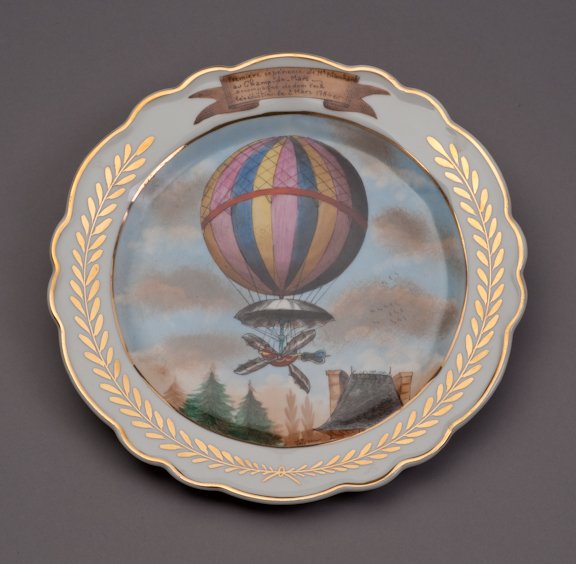
Aware of Franklin’s vivid interest in balloon experiments, the architect Julien-David Le Roy, sent him a memoir accompanied by drawings, to suggest safety and navigational improvements of hot air balloons. Le Roy proposed training birds and employing them as navigational aids, as illustrated in the image below. In Le Roy’s words, his goal was “to make the man, [in order] to lead the Aerostat, master of all the species of birds, to give him the means to force them to fly, or to stop their flight, to fly all those he wants to employ, in the same direction, and to change their direction as often as needed.”
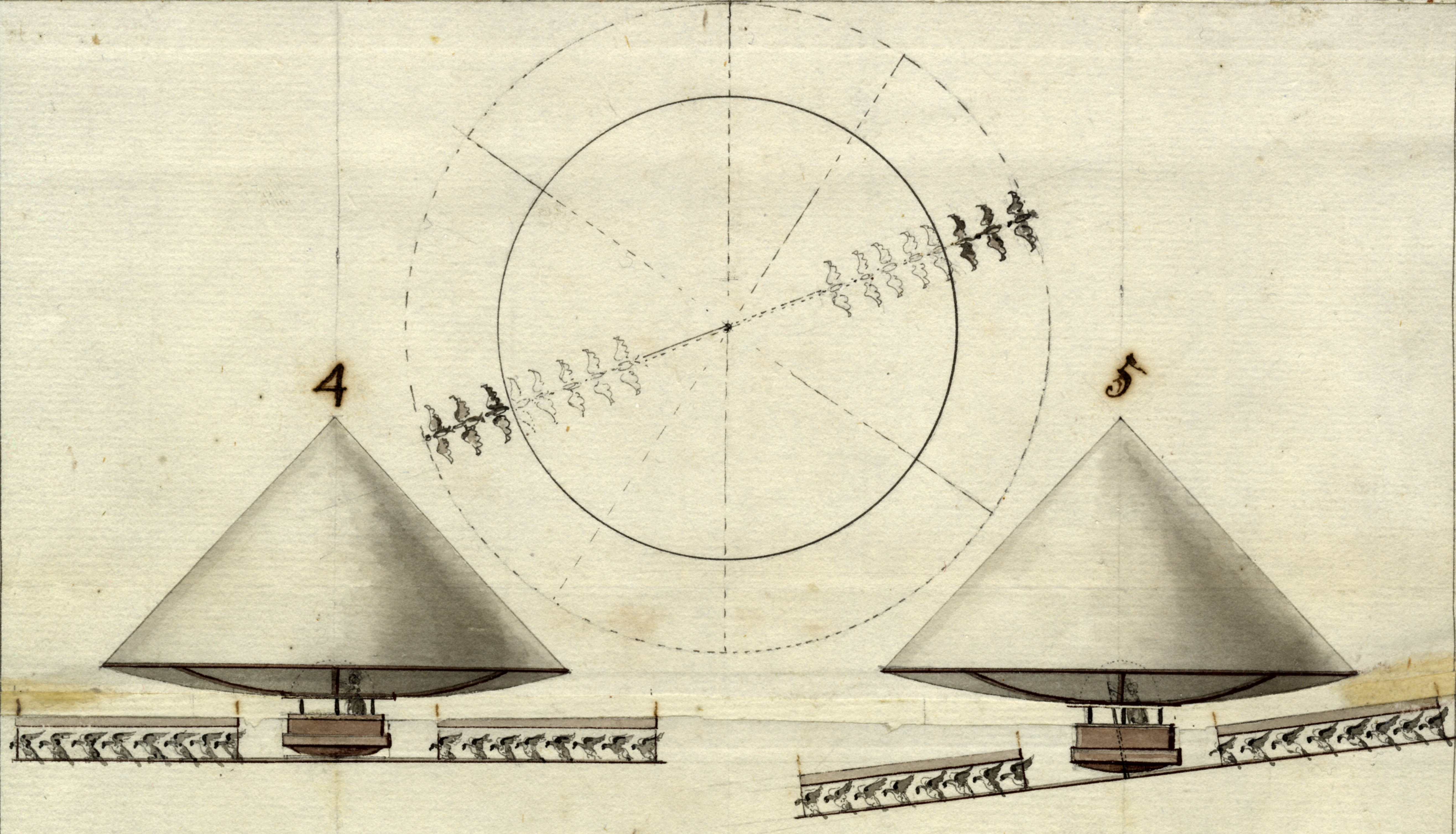
The flying machine experiments in Europe crossed the Atlantic in the early 1790s, together with Blanchard. On January 9, 1793, the first air voyage in America started around the corner from the Society’s headquarters, Philosophical Hall, from the yard of the old Walnut Street Prison, at Sixth and Walnut Street. At least two APS members, Benjamin Rush and Caspar Wistar, supported Blanchard’s successful hydrogen balloon ascension, thus marking the beginning but not the end of the Society’s involvement with aeronautics in the United States.
